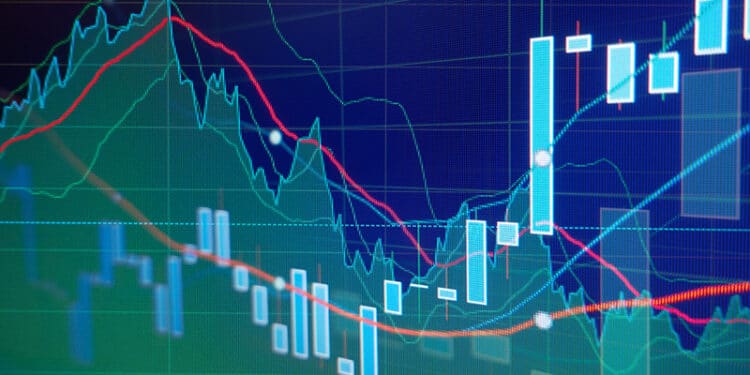Volatility and liquidity are sometimes confused because they are distinct yet also interconnected at the same time. When analysts refer to a highly liquid market, they likely will also mention volatility and vice versa.
This article will briefly define what liquidity and volatility are in forex, how they affect trading costs, price movements, and their inherent relationship.
What is liquidity in forex?
Liquidity is a term in financial markets referring to the ease at which an asset can be bought and sold without drastically affecting its price. Forex is frequently cited as the most liquid market globally because there is always a substantial supply and demand for currencies, allowing for trades to occur in milliseconds.
We could also think of liquidity according to the market depth and volume. Due to the high liquidity, prices tend to remain fairly stable. For instance, if someone bought ten lots of USD/JPY, it may only have a little influence on price.
However, if another person bought 100 lots of the same pair, that could have a more noticeable impact. For an instrument with lower volume or liquidity, the same number of traded lots could significantly impact price.
Liquidity is also an immense contributor to trading fees. If the supply and demand for an item are fairly high, the costs tend to be lower. So, liquid forex pairs like euro and majors generally are characterized by small spreads, making them cheaper to exchange.
This contrasts thin or illiquid markets like exotic pairs where participation is lower, resulting in higher spreads, making these more expensive to trade.
On the whole, the colossal liquidity in the forex also means slippage is rare. Slippage is an irregularity when the price of an executed order is marginally different from what was requested.
Such circumstances typically occur during periods of high (and sometimes low) volatility, leading us nicely into explaining volatility.
What is volatility in forex?
Volatility is a measure of the degree prices’ change over a given period. Analysts not only consider the percentage difference from one level to another but also the speed. Each forex pair has an expected volatility range measured using numerous technical indicators.
This information gives traders some anticipation of how much ground price might cover over a certain period. While some perceive high volatility negatively, it’s a necessary component since the more pips price moves and the quicker it does this, the more profit a trader could realize in a shorter period.
Also, despite a perception of forex being highly volatile, it technically moves in small increments every day. For instance, many of the major pairs typically move in a 1% range or 55 pips on average daily.
This is primarily because the higher liquidity means even when thousands of lots are being traded every second, prices will tend to move a lot slower. The order flow would have to change tremendously from one side to another to witness a noticeable change.
This contrasts with less liquid pairs like exotics normally moving in at least a 2% range or 300 pips on average each day. Let us now explore how liquidity and volatility interconnect in forex.
How liquidity and volatility are related in forex
The general rule of thumb is the greater the liquidity, the lower the volatility, as we have briefly seen in previous examples. A market’s liquidity influences the volatility of prices.
If a market is highly liquid, supply and demand are also relatively high, making it harder to move prices substantially.
Conversely, when liquidity is low, there’s an imbalance of supply and demand, meaning a disparity in the order flow.
In a thinly-traded market like exotic pairs, bigger orders from one group can easily move prices more considerably than on more liquid pairs because of fewer active market participants.
Liquidity and volatility also influence slippage. When liquidity is at a normal high range, the order book can quickly match buyers and sellers. However, when the market activity becomes overwhelming such as during a high-impact news release (higher liquidity), a lot more orders need to be processed, resulting in erratic or higher volatility.
In other words, trading during these times may equate to positive slippage where the resulting order is better than the requested price or the opposite, depending on how great the volatility is.
With such imbalances between liquidity and volatility, spreads also widen as market makers have to put more effort into sourcing the most favorable prices for all traders.
What about flash crashes?
While flash crashes in forex are sporadic, they illustrate the disparities between liquidity and volatility. A flash crash is a rapid decline or rise in prices over a short period.
Although this phenomenon is still misunderstood, the evidence clearly suggests a trend in when they have occurred.
Whether a flash crash was believed to be caused by high-frequency trading algorithms or human intervention, these had happened when liquidity was low such as during less busy periods.
It means an abnormally large sell or a buy order occurred during that time that was large enough to cause a substantial price change, resulting in higher than regular volatility.
Final word
To summarise, liquidity refers to the depth of orders and the ability to buy and sell on-demand without tremendously affecting price. On the other hand, volatility refers to the degree to which price changes over a specified period in distance and speed.
Both are necessary components in forex trading, where speculators consistently analyze the two before making trading decisions. This article should have shed light on how both relate, how they affect trading costs and the extent of price movements.




